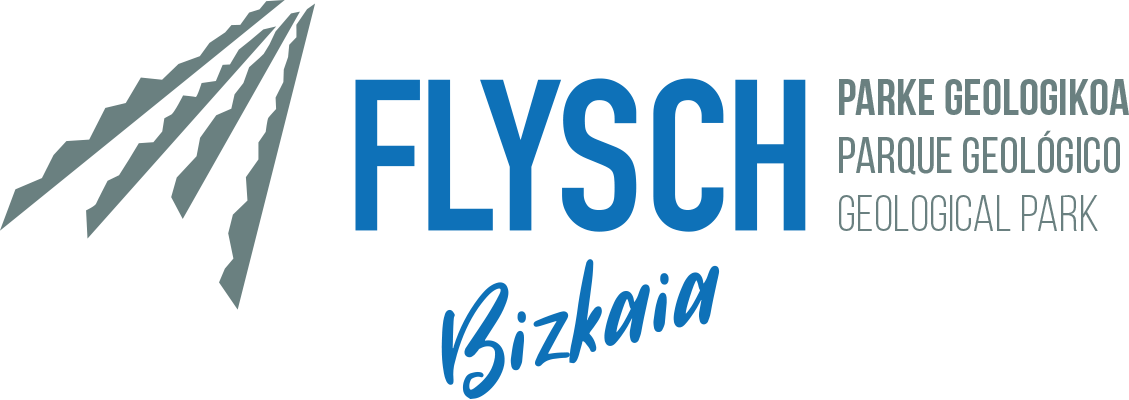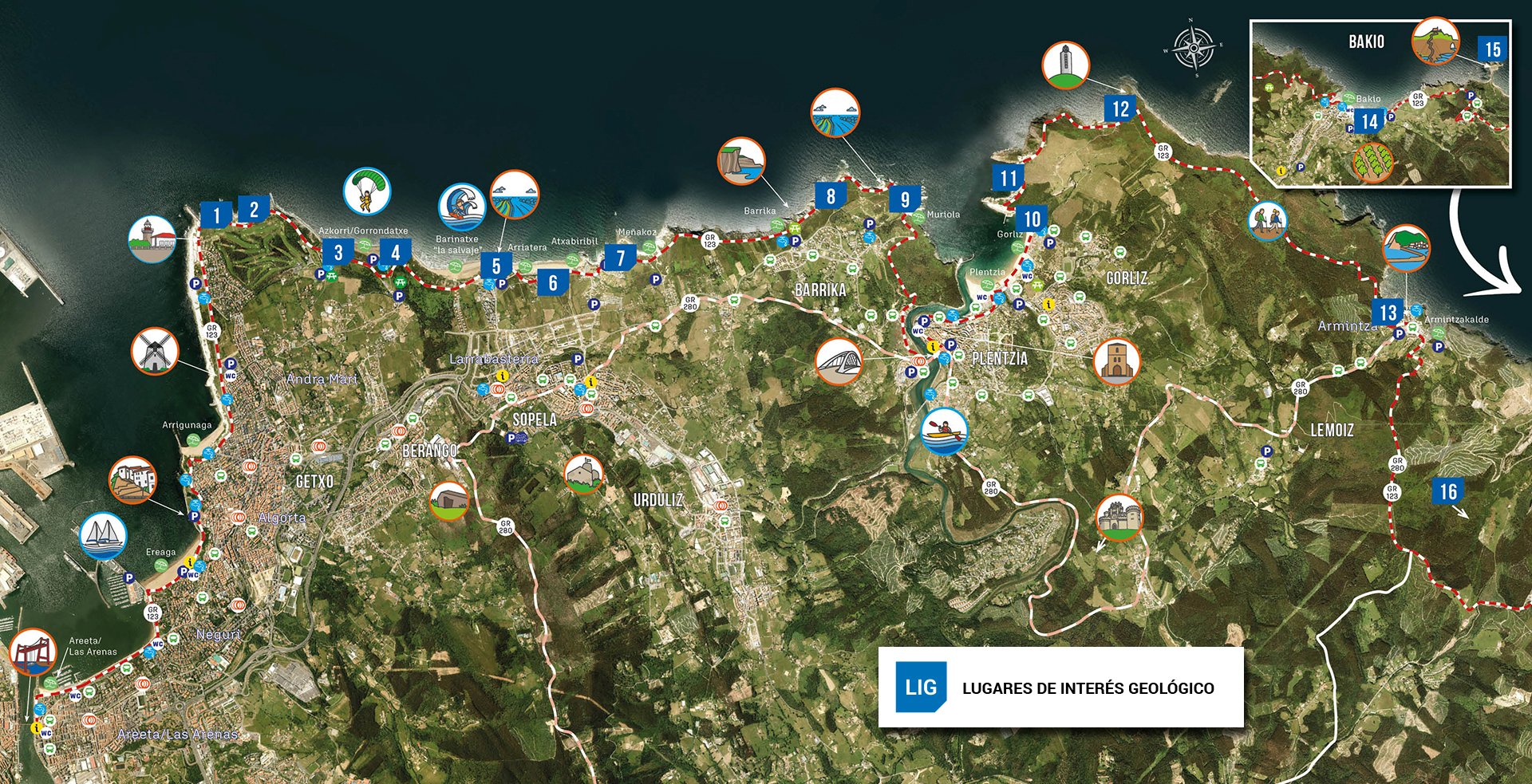PLACES OF GEOLOGICAL INTEREST
ACTIVITIES
REASONS TO VISIT THE FLYSCH OF BISCAY
The grand coupure
Do you know what syncline means? It's a V shaped fold in the sedimentary strata, so the layers of the rocks are convex going downwards.
Nummulites, fossil coins
There are fossils from around the cliffs over the Tunelboka beach that are called nummulites (nummus means coin in Latin) because of their flat round shape. Even though it sounds hard to believe, they were single cell organisms! They had a spiral shell.
Magnetic beaches
Along the Flysch of Biscay Route you can discover two beaches - Gorrondatxe (Azkorri) and Tunelboka - whose sands have undergone cementation.
The golden spike
The importance of this place of geological interest lies in the Lutetian stratotype found here.
Cave diving on the cliffs
A large part of the Flysch of Biscay Route, from Aixerrota to Barrika, runs over flatlands located above spectacular cliffs.
The meteorite impact crater
66 million years ago... A huge 10 km diameter meteorite plunged into what is now next to the Yucatan peninsula in Mexico. The Earth was covered in dust and ash, photosynthesis could no longer occur and the cold lasted decades.
The lava field
Carefully descending to the Meñakoz beach, on the left you can see a peculiar wall that is about 15 metres tall made of round stones. Do you know what secret the stones hold?
Barrika, the cathedral of folds
80 million years ago, the African and European tectonic plates started a process of collision that lasted millions of years. It produced numerous enormous folds in the layers of the Earth, as well as other smaller folds like the ones in Barrika.
The landing of the flysch
The sandy deposits of Barrika are dunes hanging over the cliff and they're up to 15 metres deep. Do you know why they're up there? The wave-cut platform emerged and the sandy deposits on top of them were raised as well
The sands of time
The passage of time and the effects of the wind have shaped the coast of Gorliz in Astondo over millions of years, causing the formation of the dunes.
A castle on a coral reef
This rocky promontory that is part of Punta de Azkorriaga was formed 120 million years ago from the remains of a coral reef and molluscs like rudists, which went extinct in the late Cretaceous period.
Towards the cretaceous lighthouse
The materials that make up the Cabo Billao Place of Geologic Interest were formed in the Cretaceous period, 110 - 90 million years ago, during a period of intense tectonic activity in the Basque-Cantabrian basin. Posterior collisions and the action of the waves moulded this part of the coast into the shape it has today.
Black flysch of Armintza
Have you noticed that the rocks around Armintza are arranged like a mil hojas? This geological formation with a sedimentary origin is called a FLYSCH. It has alternating hard layers of rock and layers of softer materials (black lutites and turbidites) that give it its distinctive colour.
A diapir in Bakio
Have you ever heard of a diapir? A diapir is a geological phenomenon where some more flexible and less dense materials make their way into more dense and modern materials.
The dragon rock
The islet of Gaztelugatxe, crowned by its hermitage, is certainly an icon of Basque Country tourism. However, most people aren't aware that it's in an enclave that's unique because of its special geology. It's one of very few islands on this part of the Cantabrian coast.
The little basalt giant·s causeway
The Causeway of Giants in Ireland is famous around the world for this kind of volcanic rock. But here in Fruiz we've got a more modest version.

